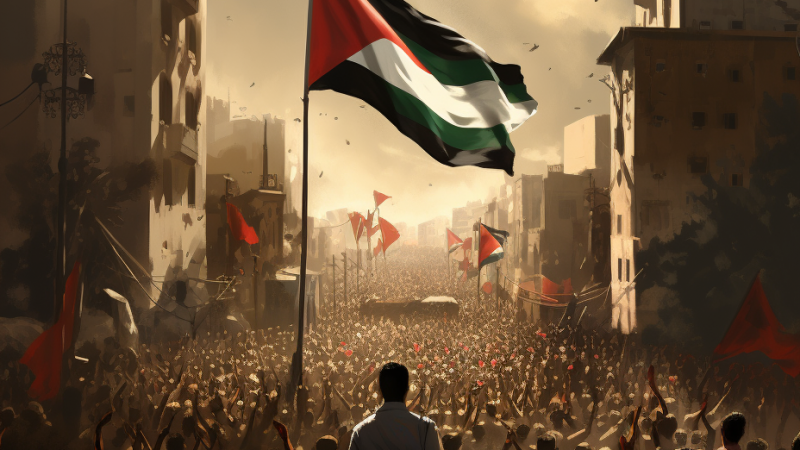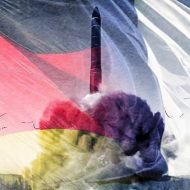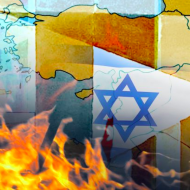By Yiğit Saner
The Tel Aviv regime has surrounded Gaza with troops and tanks after air and ground attacks that have resulted in the death of more than 10,000 Palestinians and over 4,000 children. As planes, drones, and helicopters fill the sky, artillery fire hits Palestine. Israeli ground forces have begun entering the inner parts of the city.
According to the latest reports from the field, ground operations are continuing almost without interruption with air, armored, and artillery attacks. While this triple firepower provides an advantage to Israeli soldiers, it is causing tremendous damage to civilians, the city’s infrastructure, and homes. Despite the advance, there are many unknowns awaiting the Israeli army.
Operation in 2014
Eric Tzolek, a field correspondent and West Asia representative for ABC Australia, shared his views on where the ongoing war, slowly extending into residential areas in Gaza, could lead.
With his extensive field experience, Tzolek said that Israel had attempted a similar operation in 2014, albeit on a much smaller scale: “At that time, Israel entered Gaza with a large number of troops to destroy the underground tunnels advancing towards the Israeli border. However, facing intense resistance, the Israeli forces suffered significant losses and had to withdraw without much progress.”
A first for Israel
Unlike 2014, Israel’s goal this time is something it has never attempted before: to destroy Hamas.
Reports in the American press shared a 2017 document written by strategic expert Raphael Cohen from the Rand Corporation, a think tank with close ties to the US government: “Israel has never sought to achieve a decisive victory in Gaza” writes the document and highlights the potential risks of overthrowing Hamas: “Israel might defeat Hamas, but it cannot overthrow Hamas without the risk of handing Gaza over to a more radical organization.”
“Hamas has 30 to 40 thousand fighters”
Israeli politicians and soldiers may claim, “This time we will finish the job” and characterize the war as “existential,” but according to journalist Tzolek, it “won’t be easy at all”: “The Israeli military believes that Hamas has extensively prepared for a defence in the urban, using tunnels, ambushes, and traps.”
Many analysts estimate that Hamas has between 30,000 to 40,000 fighters. It is a known fact that these fighters have been preparing for years to engage in house-to-house, neighborhood, and underground tunnel warfare.
Urban is an advantage for Hamas
According to Tzolek, Israel relies on its military equipment, while Hamas leverages the urban geography: “The urban environment provides with numerous places to hide, tunnels, and hidden vantage points, strengthens the hand of Hamas, which is weaker in terms of military equipment. It is a reality that regular armies forced to fight in such conditions suffer significant losses.”
Why has Israel few casualties?
Tzolek explains the few numbers of casualties since Israeli forces reached the city’s outskirts, unlike previous experiences, as follows: “There’s a crucial change: armoured vehicles are leading the advance, and they seem successful in repelling Hamas attacks with Active Protection Systems.”
According to Tzolek, these new technologies seem to intercept rocket-propelled grenades and anti-tank missiles used against tanks and armored personnel carriers.
Disadvantages of Israel
However, Tzolek also suggests that as the conflict moves into residential areas, the situation may change: “Israel’s ability to use air strikes and tank and artillery fire may be constrained when the troops engage in street battles.”
Israel will face other disadvantages as well: “Hamas is not inclined to surrender. I don’t think there has been a single Hamas fighter who raised their hands to surrender so far. They prefer to die.”
Moreover, Tzolek mentions that the more destruction Israel causes with airstrikes and artillery fire, the more obstacles the forces and vehicles will encounter.
“Eliminating Hamas won’t solve the problem”
Even if Israel manages to seize Gaza despite Hamas, the question of how to deal with the rest of the Gaza Strip is a crucial issue raised by many analysts.
Avi Segal, an Israeli citizen with honorary doctorates from Ben Gurion and Hebrew universities, criticized the Tel Aviv government, stating that military operations would not provide a solution without addressing political issues: “Eliminating the leadership of Hamas is a military goal, not a political one. A political goal and likely international cooperation are needed to solve the Gaza issue. Israel, or at least our government, has not shown any indication of being prepared for this so far.”









Leave a Reply